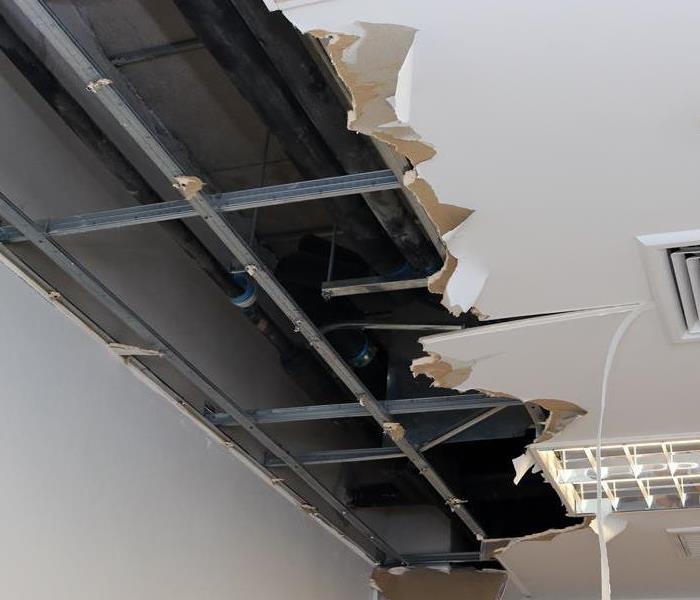Understanding Secondary Water Damage: Causes, Effects, and Prevention
8/10/2023 (Permalink)
Water damage is a significant concern for homeowners and property managers, but it's not just the immediate effects of water intrusion that you need to worry about. Secondary water damage can occur if the initial water damage is not properly addressed or if it goes unnoticed for an extended period. In this blog, we will explore what secondary water damage is, its causes, effects, and most importantly, how to prevent it. Understanding and taking proactive measures against secondary water damage can save you from further costly repairs and potential health hazards.
Defining Secondary Water Damage
Secondary water damage refers to the additional harm that arises as a result of prolonged exposure to moisture or the improper drying of an initially affected area. It occurs when water seeps into building materials, such as drywall, flooring, or insulation, and causes damage over time. Secondary water damage can include mold growth, structural deterioration, weakened foundations, and compromised indoor air quality.
Causes of Secondary Water Damage
- Delayed or Inadequate Water Extraction: If the initial water intrusion is not promptly addressed or if inadequate measures are taken to extract the water, excess moisture can remain in the affected area. This prolonged exposure can lead to the development of secondary water damage.
- Poor Ventilation and Air Circulation: Insufficient airflow and ventilation impede the drying process. Without proper circulation, moisture can become trapped within walls, flooring, or other porous materials, leading to secondary damage.
- High Humidity Levels: High humidity levels in an environment affected by water damage can create a favorable breeding ground for mold growth and other microbial activity. Mold spores can quickly spread throughout the property and cause significant secondary damage.
- Plumbing Issues: If the initial water damage is caused by a plumbing issue that goes undetected or unrepaired, continuous water leakage can exacerbate the damage and result in secondary problems such as rotting wood, mold growth, and structural deterioration.
Effects of Secondary Water Damage
Excess moisture provides the ideal conditions for mold spores to thrive. Mold growth not only damages surfaces and materials but causes secondary damages. Prolonged exposure to moisture weakens the structural integrity of building materials. Wood may warp, swell, or rot, and drywall may deteriorate, compromising the stability and safety of the property.
Lingering moisture and mold growth contribute to unpleasant odors and poor indoor air quality. This can lead to discomfort, respiratory problems, and potential long-term health issues. Secondary water damage often requires more extensive repairs and restoration efforts compared to the initial damage. Mold remediation, structural repairs, and the replacement of damaged materials can significantly increase the overall cost of restoration.
Preventing Secondary Water Damage
- Act promptly: Address water damage immediately to minimize its impact and prevent secondary damage. Swiftly extract water, dry affected areas, and address the source of the water intrusion.
- Thoroughly Dry the Area: Ensure proper drying by using dehumidifiers, fans, and ventilation systems. Consider employing professional drying equipment and techniques for large-scale or severe water damage situations.
- Inspect for Hidden Damage: Conduct a thorough inspection of the affected area, including hidden spaces such as behind walls or under flooring. This helps identify any potential moisture pockets that may lead to secondary damage.
- Properly Ventilate: Maintain good airflow and ventilation throughout the property. Regularly inspect and clean ventilation systems, including HVAC units and air ducts, to prevent moisture buildup and mold growth.
- Monitor Humidity Levels: Use a hygrometer to monitor indoor humidity levels. Keep them below 60% to discourage mold growth and minimize the risk of secondary damage.
- Regular Maintenance: Conduct routine inspections of plumbing systems, roof, and foundation to detect and address any potential issues that may cause water damage.
Secondary water damage can be a costly and potentially hazardous consequence of water intrusion. By understanding its causes, effects, and prevention measures, you can take proactive steps to mitigate the risk of secondary damage. Remember, early intervention and preventive measures are key to preserving the integrity and safety of your home or building.





 24/7 Emergency Service
24/7 Emergency Service
